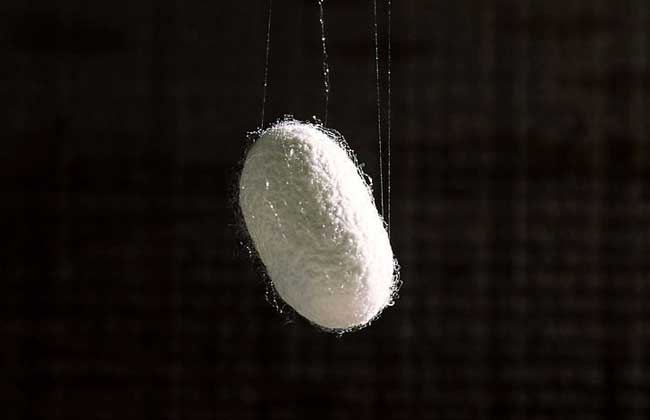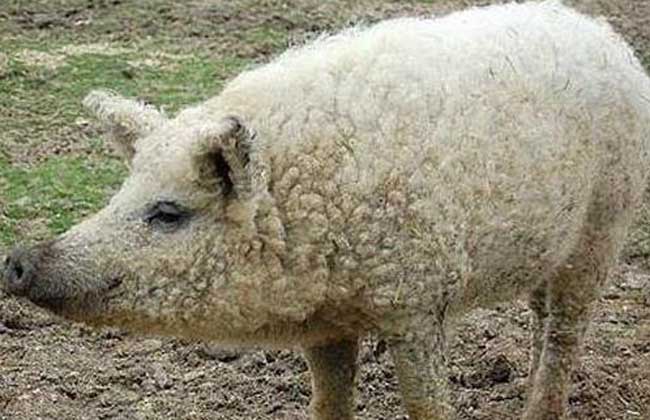How much is a kilo of cocoons?

The silkworm cocoon is also known as silkworm clothing, cocoon yellow, cocoon shell, etc., usually refers to mulberry cocoon, is the capsule-shaped protective layer of silkworm pupa, is produced in sericulture areas all over the country, and contains pupa, and the protective layer includes cocoon clothing, cocoon layer and pupa lining, and the cocoon layer can be reeled. Cocoon clothing and reeling waste silk can be used as raw materials for silk cotton and silk spinning. Let's take a look at how much the cocoon costs per jin.
How much is the cocoon per jin?
The price of grade A dry cocoons is about 58 yuan per jin, and the price of fresh cocoons is about 17 yuan per jin, but this is the average price across the country, which varies from place to place. At the same time, according to the quality of cocoons, the prices are also different. Generally, the cocoons with high cocoon rate and good reelability, silk length and high silk yield are excellent cocoons, and the market price is higher. In addition, white cocoon color, normal luster and uniform cocoon shape are also important criteria for high quality cocoons.
Quality inspection of silkworm cocoon
1. Silk quantity value: silk quantity value mainly refers to silk yield and fresh cocoon yield.
2. Reelability value: the reelability value includes the characters related to silk reeling efficiency, such as relaxation rate, silk length and so on.
3. Silk value: silk value includes cocoon silk size, thickness gap and cocoon silk character.
4. Population value: population value refers to the uniformity of various characters among cocoons in the same batch and the number of cocoons in the batch.
Quality index of silkworm cocoon
1. Cocoon shell ratio: cocoon shell ratio refers to the percentage of cocoon layer weight in cocoon weight, which is the main index to evaluate cocoon grade. The higher the cocoon shell rate, the more silk weight. The cocoon shell ratio of spring cocoons is generally 22% 26%, and that of summer and autumn cocoons is 18% 23%.
2. Cocoon filament length and cocoon filament weight: cocoon filament length and cocoon filament weight refer to the length and weight of cocoon silk that can be reeled by one cocoon. Generally, the length of spring cocoon silk is 900 ~ 1500 meters, and the weight of cocoon silk is 0.35 ~ 0.45 grams. The length of cocoon silk in summer and autumn is 700 to 1200 meters, and the weight of cocoon silk is 0.22 to 0.37 grams.
3. Silk length and relaxation rate: both silk length and relaxation rate reflect the difficulty of dissociation of cocoon silk from cocoon layer during silk reeling. Silk length is the average silk length (m) that can be reeled continuously for each joint of cocoon silk in the process of reeling, and the relaxation rate is the percentage of silk length to cocoon length. A good relaxation leads to less thread loss, more silk production and good quality, while the relaxation difference leads to more thread loss, an increase in the amount of waste silk, a decline in silk production rate and raw silk quality, and silk reeling often consumes a lot of energy and high cost because of reeling.
4. Silk yield: silk yield refers to the percentage of silk weight in cocoon weight or expressed by cocoon layer reeling rate, which is a comprehensive index of cocoon quality. The silk yield is mainly determined by the cocoon rate, cocoon shell rate and relaxation rate and other factors. The silk yield of fresh cocoons is generally 14.16%, and the high rate can reach 190.21%. The reeling rate of cocoon layer is the percentage of silk weight in cocoon layer weight, which is generally 75% to 85%.
5. Cocoon silk size: cocoon silk size indicates the degree of cocoon filament thickness, in denier, Jane writes "Dan" or "D", commonly known as "points" or "strips", that is, a 900-meter-long cocoon thread weighs 0.1 grams. The larger the denier number, the thicker the cocoon silk. The average size of cocoon filaments of hybrids is 2.8-3.3 Dan in spring and 2.0-2.7 Dan in summer and autumn.
6. Cocoon silk knots: the local deformities of cocoon silk are mostly caused by the interruption of spinning or the lack of dissociation of the ∞ gluing part of cocoon silk during reeling. More knots will increase the breakage in the process of silk reeling and weaving and reduce the quality.
7. Cocoon layer separation fine size: cocoon layer separation fine size, also known as micro-antler, is a fine fiber in sericin, its dyeing performance is poor, affect the fabric quality, is one of the cocoon silk defects.
Related
- A course of planting techniques and methods on how to grow carrots
- How to plant the latest tulips?
- Is it better to pick tea in the morning or in the afternoon? When is the best time for tea to be picked? what is the third or fifth tea?
- Launch Yuanxiao Happy combination Haocha + Tea Yuan healthy Taste
- Penghu Tourism "Fireworks 20 Parade with You"
- 2022 West Lake Happiness holds "Digital Revitalization Voucher" and draws iphone13 and laptop.
- Banqiao Fuzhou social houses are designed to change start-up combined with police elimination to create a safe and livable environment
- The convenient measure of "mechanical weeding" in Xinbei has been abused and the Agriculture Bureau has imposed heavy penalties on the illegal land consolidation.
- Changgeng University Joins Hands with Four Memory Factories to Rescue Memory Talent Shortage
- The list of Taiwan's top 100 MVP managers is listed by the Director-General of the Farmers' Association of Sanxia District.



